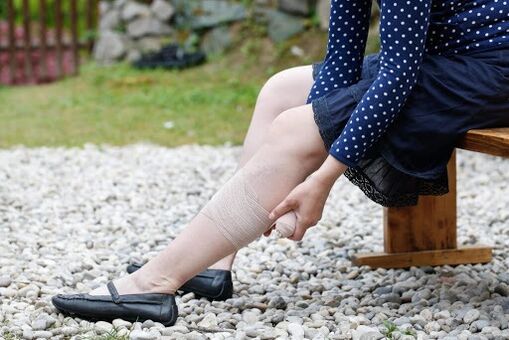Prevention of varicose veins of the legs (lower extremities) allows you to avoid the early development of symptoms of chronic venous insufficiency and live a full life. Many people want to avoid developing their varicose veins. Despite this, very few people are involved in the prevention of varicose veins. Modern statistics and observations by experts show that even patients without genetic factors are susceptible to varicose veins. Therefore, prevention of venous insufficiency of the lower extremities should be started long before the first symptoms of venous insufficiency appear.

It is not necessary to say that when chronic, edema of the lower extremities at night, appearance of saphenous varicose veins, it is necessary to contact a vein specialist, a vascular specialist.
Modern prevention of varicose veins of the lower extremities includes what:
- Physiological enough physical activity. Hiking, swimming, cycling are very useful. With these types of loads, the gastrocnemius muscle is involved, which maintains the necessary tone of the venous system of the lower extremities.
- Regular, balanced diet. The amount of protein, fat, carbohydrates, vitamins and trace elements needed to enter the body daily.
- The use of compression knitwear for excessive and static loads, as well as for air travel.
- Prophylactic visit to the phlebologist to monitor the condition of the venous system.
By following these simple rules, you can keep your feet healthy for a long time.

Many ointments, creams, as well as baths with herbal decoction can provide a certain feeling of refreshment, but they cannot prevent the development of varicose veins. All of these effects do not effectively prevent varicose veins of the legs (lower extremities). Do not think that prevention of varicose veins can completely prevent the development of the disease. Nothing in this world is perfect. However, preventing varicose veins can prolong life for many years without symptoms of the disease.
Questions of patients about the prevention of varicose veins of the lower extremities
What can not be done with varicose veins of the legs?
With varicose veins of the lower extremities, you cannot do the following:
- Visit the baths and saunas. If you have varicose veins, heat exposure can cause thrombophlebitis and deep vein thrombosis.
- Holding a static position for long periods of time, walking for a long time, or climbing mountains can cause rapid development and progression of chronic venous insufficiency.
- It is better to delay the massage and laser massage of the lower extremities until the problem of varicose veins is resolved.
What exercises can't be done with varicose veins?
With varicose veins (varicose veins) of the legs, you should not do any exercises that involve intense loads on the lower extremities. Even brisk walking and running in good sneakers to exercise leg muscles and dilate lower extremities can have adverse consequences. In particular: provokes an inflammatory response and the development of thrombophlebitis. Prolonged static loads (standing or sitting) should also be avoided as much as possible. Exercises such as deadlift, squat with weights are contraindicated for patients with varicose veins. Sufficient stress on healthy veins is a must, but varicose veins are different. Treating varicose veins and playing sports is much easier than managing the complications of varicose veins for life.
Contraindications to varicose veins of the lower extremities?
With varicose veins of the lower extremities, the following are contraindicated:
- Intense physical activity in the lower extremities, static loads.
- Bath and sauna, tanning.
- Coating and shedding.
Folk remedies and other remedies that have a reputation of being equivocal are also contraindicated for varicose veins of the lower extremities.
How to prevent varicose veins in the legs when standing up?
The only really effective method to prevent varicose veins of the lower extremities while working standing is good compression therapy. You should use type 2 compression socks or knee high socks for this purpose. Special exercises to work the calf muscles during the workday will also be very helpful.
Ointment for veins and blood vessels in the legs, which is better? Modern ointments for varicose veins have a different composition and, accordingly, pursue different tasks. Leading veniologists often use the following ointments in their practice: containing heparin (lyoton, heparin), anti-inflammatory (diclak, voltaren) or a combination (detragel). You should not overestimate the effect of ointments for varicose veins, but find a good doctor who will help you cope with this disease.












































